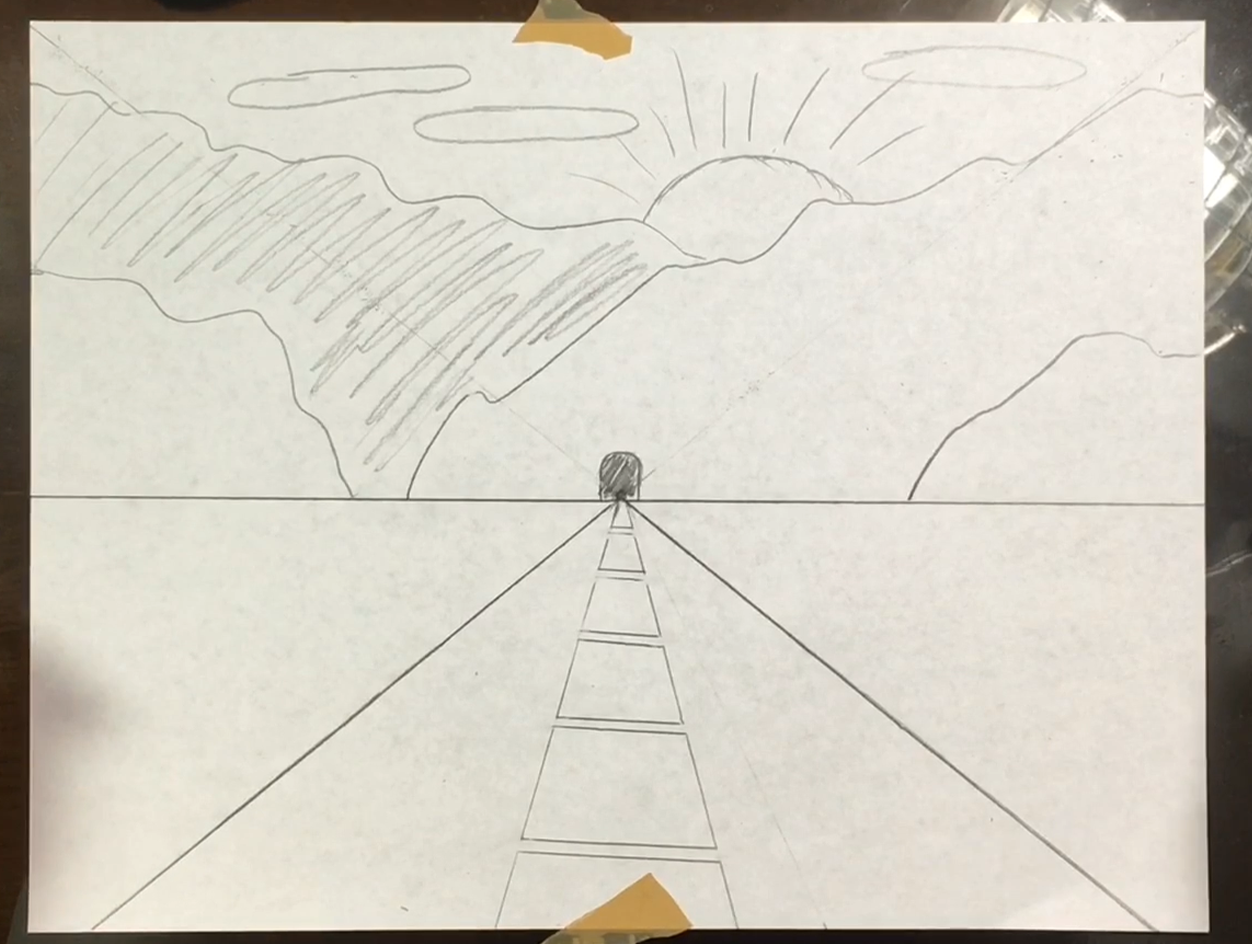Age Range: 7+
Time to Complete: 25 minutes
Supplies Needed
Pencil
Ruler or straight edge
Eraser
Colored Pencils
1. Using your ruler and pencil, draw diagonal lines from one corner of the page, to the opposite corner, making a large “X” on the page.
2. Where these lines meet, mark it with a dot. This dot is the vanishing point. When you start drawing, everything will get smaller in the direction of this dot.
3. Draw a horizontal line that crosses through the vanishing point. This line is the horizon, and represents the curvature of the earth. It is also the eye-level of the artist.
4. Retrace with more pressure, the bottom two parts of the “X” with your pencil and ruler. This will become your road. Notice, the road gets narrower as it gets closer to the vanishing point.
5. To make some street lines, make a smaller triangle in the bottom part of the “X.”
6. To make it look like the lines are getting smaller as they get further away, draw horizontal lines within the triangle you made. As you get closer to the bottom of the page, make the distance between the lines further and further apart. Separate the blocks by erasing the lines between the blocks.
7. To finish this project, add a tunnel at the very end of your road, above your horizon. If you like, add mountains, a sun, some clouds, also above your horizon line. Have fun with it!
One-Point Perspective, Part 2
A more complex and detailed lesson by Curtis Cargill, in which he explains the process of drawing buildings, sidewalks, windows and doors, using single point perspective.
Vanishing Point: A vanishing point, or point of convergence, is a key element in many works of art. In a linear perspective drawing, the vanishing point is the spot on the horizon line to which the receding parallel lines diminish. It is what allows us to create drawings, paintings, and photographs that have a three-dimensional look.
Perspective: Perspective is what gives a three-dimensional feeling to a flat image such as a drawing or a painting. In art, it is a system of representing the way that objects appear to get smaller and closer together the farther away they are from the viewer.
One-Point Perspective: A drawing method that shows how things appear to get smaller as they get further away, converging towards a single ‘vanishing point’ on the horizon line.
Horizon Line: The horizon line art theory is a horizontal line that runs across the paper or canvas to represent the viewer's eye level or delineate where the sky meets the ground. Hi
Landscape: Also known as landscape art, is the depiction of landscapes in art—natural scenery such as mountains, valleys, trees, rivers, and forests, especially where the main subject is a wide view—with its elements arranged into a coherent composition. In other works, landscape backgrounds for figures can still form an important part of the work. Sky is almost always included in the view, and weather is often an element of the composition.
Parallel Lines: two lines that are always the same distance apart but never touch.
Perpendicular Lines: is the relationship between two lines which meet at a right angle.













